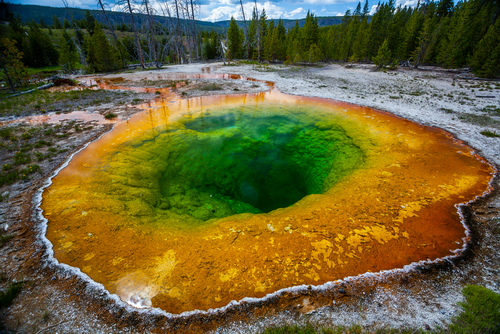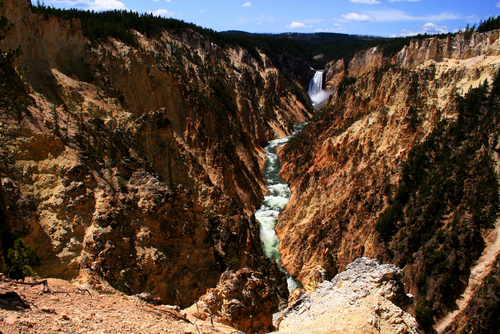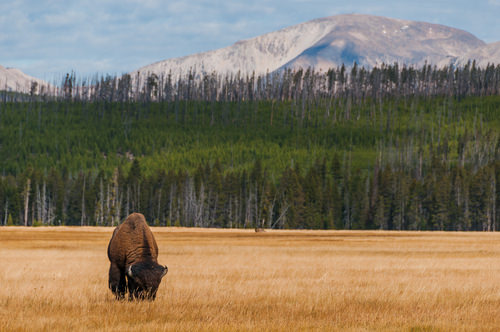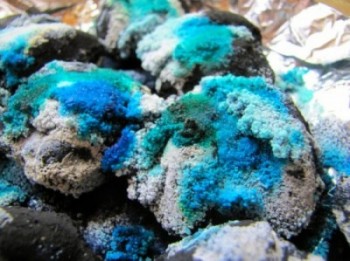Explore Wyoming, the Equality State
Hello,
 Sofia and I really loved exploring Wyoming. Yellowstone National Park is so beautiful and pristine that we felt like we went back in time. The tall geysers and rainbow-colored hot springs were unbelievable! After Yellowstone, we went to Grand Teton National Park. We stayed in a beautiful valley called Jackson Hole. Surrounded by the Teton Range, the valley is named after one of its explorers, David Jackson.
Sofia and I really loved exploring Wyoming. Yellowstone National Park is so beautiful and pristine that we felt like we went back in time. The tall geysers and rainbow-colored hot springs were unbelievable! After Yellowstone, we went to Grand Teton National Park. We stayed in a beautiful valley called Jackson Hole. Surrounded by the Teton Range, the valley is named after one of its explorers, David Jackson.
 A “hole” was what he and other early explorers used to call a valley in the bottom of the mountains. Jackson Hole is famous for many things, including skiing, the National Elk Refuge and the packs of wolves that roam the area. We started at Teton Village, renting skies for Sofia and a snowboard for me. The snow was deep and crisp so we had lots of fun racing each other! On the slopes, we met Kevin from the town of Jackson. He was excited to hear that it was our first time in Wyoming and wanted to show us everything.
A “hole” was what he and other early explorers used to call a valley in the bottom of the mountains. Jackson Hole is famous for many things, including skiing, the National Elk Refuge and the packs of wolves that roam the area. We started at Teton Village, renting skies for Sofia and a snowboard for me. The snow was deep and crisp so we had lots of fun racing each other! On the slopes, we met Kevin from the town of Jackson. He was excited to hear that it was our first time in Wyoming and wanted to show us everything.
 Kevin told us that he’s a boy scout and that each spring he helps collect elk antlers along with other scouts. “The National Elk Refuge is a winter home for thousands of elk,” said Kevin. “They come here in the winter for better feeding grounds. Each spring male elk shed their antlers, and the Jackson District Boy Scouts go around collecting them. We then sell the antlers at an auction and give the money back to the elk refuge.”
Kevin told us that he’s a boy scout and that each spring he helps collect elk antlers along with other scouts. “The National Elk Refuge is a winter home for thousands of elk,” said Kevin. “They come here in the winter for better feeding grounds. Each spring male elk shed their antlers, and the Jackson District Boy Scouts go around collecting them. We then sell the antlers at an auction and give the money back to the elk refuge.”
 Sam and I thought this was a great way to give back to nature and support the refuge. Kevin showed us photos of the antlers he found last spring and said he couldn’t wait for the next season. We saw many elk in the refuge. They are big animals! We were also lucky to spot a couple of gray wolves.
Sam and I thought this was a great way to give back to nature and support the refuge. Kevin showed us photos of the antlers he found last spring and said he couldn’t wait for the next season. We saw many elk in the refuge. They are big animals! We were also lucky to spot a couple of gray wolves.

Kevin told us they are from a Pinnacle Peak pack living in the National Elk Refuge. “We see and hear this pack a lot because they live so close to Jackson. Scientists put radio-collars around their necks to track the size of the pack and its breeding grounds.” Sam and I learned so much about the wolves and elk in Jackson Hole.
Your friends,
Sofia and Sam
Sam’s Favorites

River: Snake River
The Snake River is one of the longest rivers in the USA. More than 1,000 miles long, it starts in Wyoming and flows through Idaho and Oregon, all the way to Washington. The Snake River is popular with whitewater rafters and fisherman.
 Animal: Bighorn Sheep
Animal: Bighorn Sheep
We saw bighorn sheep in Yellowstone National Park. These beautiful animals are amazing climbers able to scale very steep cliffs. Female bighorn sheep are called ewes, and males are called rams.
Hot Springs: Morning Glory Pool
Morning Glory Pool is a hot spring that was named after the morning glory flower. Similar to the flower, the spring has a round shape and a deep vent in the center. The bacteria in the water create the pool’s unusual colors.
Sofia’s Favorites

River: Yellowstone River
Starting in Wyoming, the Yellowstone River flows through Montana and North Dakota. The river’s name is believed to come from a Native American word for “Yellow Rock River,” which is fitting because the river flows through many yellow-colored rocks.

Animal: Bison
There are thousands of bison roaming wild in Yellowstone National Park. We saw many of them feeding in the grasslands. Female bison are called cows, and males are called bulls.
Hot Springs: Prismatic Spring
Grand Prismatic Spring is the largest hot spring in Yellowstone. About 370 feet across, the spring has amazing colors that look like a rainbow. The blue center of the spring is as hot as 200 degrees Fahrenheit!
Coal Diamond Experiment
Wyoming produces more coal than any other state in the USA. Coal contains a lot of carbon, a chemical element that forms diamonds. For the coal to turn into diamonds, it takes millions of years. Here’s an easier and faster way to “grow” your own “diamond” crystals at home, using coal.

Ingredients
- 10 charcoal briquettes
- Aluminum foil bowl
- ½ cup tap water in a spray bottle
- 5 tbsp table salt
- 6 tbsp liquid bluing
- 3 tbsp ammonia
- Small glass jar with a lid
- Food coloring, any colors
Instructions
- Place the charcoal in the aluminum foil bowl and sprinkle it with the water.
- Open the windows to avoid breathing in the chemical fumes. In the glass jar, mix 3 tbsp salt, bluing and ammonia together.
- Screw the lid on and shake the jar well.
- Pour the liquid solution from the jar evenly over the charcoal.
- Sprinkle the remaining salt over the charcoal.
- Add a few drops of food coloring.
- Put the bowl away for 12 hours. You'll see colorful diamond crystals growing on top of the charcoal when you come back.
- In another 12 hours, the crystals will turn bigger and prettier.
- To keep the crystals growing, prepare a new solution of 2 tbsp water, 2 tbsp bluing and 2 tbsp ammonia and pour it around the charcoal base every two days.








